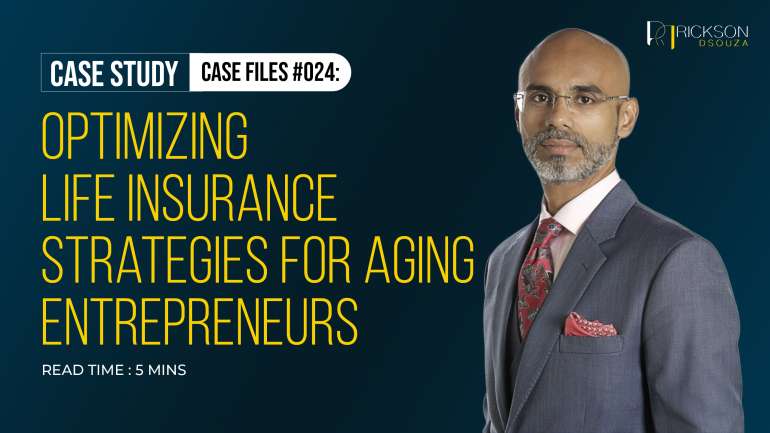In this case study, we examine the insurance strategies of two first-generation entrepreneurs, Joshua and Edward, who are now in their late seventies.
They didn’t inherit their businesses; they built them from scratch decades ago. Their empires have gone global, with the second generation now running the show.
The Challenge:
Despite their successes, both Joshua and Edward were facing a common challenge. They had purchased life insurance contracts many years ago based on the advice of their trusty banks and brokers.
These policies were deemed excellent at the time, but over the past decade, the insurance industry has evolved significantly.
Newer, more efficient products were available, offering a broader range of investment options and potentially higher growth rates than the policies purchased a decade ago.
A typical old policy assumed a low investment yield, perhaps around 4.1% to 4.2%, which was considered high at the time. Their policies delivered around 3.2-3.45% per annu, causing a deficit of 0.75% per annum – compounded over 10 years. We’re talking a big, widening gap here over time.
Additionally, in today’s market, these rates are notably low. This is because the newer structures allow you to grow your policy value by participating in indexes such as the S&P500 Index, where the long-term average growth rates are above 6.00%.
Lower assumed growth rates result in higher premiums, while higher assumed growth rates lead to lower premiums.
Okay, let me break it down for you. Imagine your Life Insurance like a money plant:
1. Slow Growth, More Payments: If you think your money plant (investment) will grow slowly, the insurance company says, “Okay, we need more money from you regularly, just to be safe.” So, you end up paying higher amounts regularly to support your policy.
2. Fast Growth, Less Payments: On the other hand, if you believe your money plant will shoot up quickly, the insurance company says, “Nice! We don’t need much from you upfront.” Your regular payments (premiums) are less because they expect your money plant to bring in more cash later.
In a nutshell, it’s like predicting how fast your financial plant will grow. The slower you think it’ll grow, the more you pay regularly. But if you’re expecting rapid growth, your regular payments can be less. It’s a balancing act based on your optimism about your money plant turning into a tree.

The Consequence:
In the last ten years, there have been a lot of cases where the real returns from these policies didn’t quite match up to the assumed growth rates.
Joshua’s policy was one such policy. Despite assuming a 5.00% growth rate, the investments attached to his Life Insurance policy was only churning out at about 3.00%.
Then there’s Edward, who initially banked on a 4.1% growth rate but was only hitting 3.25%.
These might seem like small differences, but in the long run, they compounded into huge gaps in the projected income (significantly higher) and the actual income.
The Critical Issue:
Joshua’s policies initially anticipated a future cash value of $7 million by the time he hits 100, while Edward’s policy had a projected cash value of $10 million for the same age milestone.
However, the disparity between assumed and actual growth rates means these policies are veering off course from their promised outcomes.
Joshua’s policy is now estimated to exhaust by age 83 instead of the initially expected age 120, and Edward’s policy is projected to run out by age 91 instead of age 120.
This means both Joshua and Edward will not receive the benefits or payouts they anticipated, potentially leaving them and their families with no financial support.
Their insurance plans may not last as long as they initially thought. They expected these plans to provide financial support until they turned 120, but now it seems the funds might run dry before reaching that age.
In straightforward terms, when an insurance policy “exhausts” or “runs out,” it means the money they counted on for the latter part of their lives might not be sufficient.
It’s like planning your finances for retirement but realizing the funds might not cover you for as long as you anticipated.
Additionally, as the policyholders aged, the rising cost of insurance contributed to a faster decline in the cash value.

The Solution:
Joshua and Edward faced different circumstances and chose to address their problems in different ways.
1. Edward: Unfortunately, Edward’s health deteriorated, making him uninsurable. When he was first informed about his policy’s issues, he was eligible for a new, more efficient policy with higher growth potential.
However, he didn’t take action in time. He’s now left with a policy that will only pay out if he lives to 83. If he needs to encash his policy lives beyond 83, he may not receive any funds, nor his family receive any payout.
2. Joshua: Joshua, on the other hand, maintained good health. Recognizing the issue with his old policy, he took proactive steps.
He switched things up and got himself a new policy that not only had better growth potential but also came with lower premiums.
Now, he’s secured a cool $7,000,000 when he hits 70 for $2,900,000. Plus, this plan is built to last well past the age of 121, with $7,000,000 cash waiting for him at the age of 100. Talk about a solid upgrade!
As we conclude this case study, an important question emerges: How’s your insurance holding up in today’s ever-changing market?
The financial landscape is no still pond; it’s more like a swift river. What might have sailed smoothly ten years ago could be navigating rough waters now.
Ask yourself: Is your policy on track to meet its promises?
Take a moment to review your insurance strategy. Evaluate its alignment with your current circumstances, market conditions, and future aspirations. It might just be the difference between a policy that merely exists and one that thrives.

